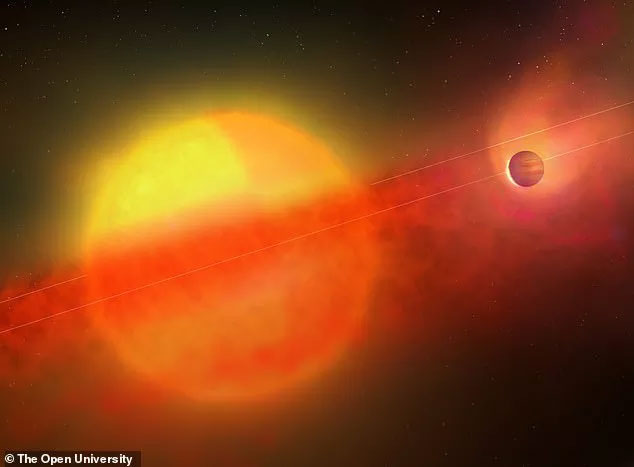6 super Earth 'hell' with iron hearts revealed the mystery of our planet
Scientists from the Open University (UK) claim they have found a way to geologically analyze the special exoplanets they screen from data from the European Space Observatory in Chile.
The six planets were chosen as "super-Earths" with a predominantly rocky texture and an iron "heart" . In other words, they belong to the same rocky planets as Earth, Mercury, Venus or Mars.

One of the 6 iron-core planets described in the study - (photo: THE OPEN UNIVERSITY).
These six exoplanets are all "hell worlds" , with a surface temperature of 1,100 - 1,800 degrees Celsius, rotating very close to the parent stars called DMPP-1 202 light-years away, DMPP-2 ways. 440 light years and DMPP-3 160 light years away.
It is these properties that enable scientists to carry out the necessary geological measurements from extreme distances. Because when a planet orbits close enough to its parent star, with temperatures that are "hell", its atmosphere will gradually erode, creating a thin cloud of gas surrounding it.
These gas curtains filter the light from the stars, making it easier for astronomers to detect their existence. At the same time, the analysis of the chemical composition of the gas curtain reveals the rocks on the planet's surface.
Their size is also special, because rocky planets with large iron cores like Earth or Venus, or larger, are quite difficult to find objects in the universe.
Therefore, their geological analysis may be the key for us to better understand how the earth was formed, as well as the formation of other rocky planets in the Solar System.
Among them, DMPP-1 possesses the most hot iron planets with iron cores: 3 super-Earths are 3-10 times larger than ours. The DMPP-1 system also has another planet, the closest spin, called DMPP-1b but unfortunately it is not in the type that this research aims.
The research has just been published in the journal Nature Astronomy.
- Discover the hell situation on Super Earth
- Visit hell 'frightened' of ancient people
- 9 Hell Floor in Dan Te's Spirit Song
- Discovering the 'hell version' of the Earth
- NASA revealed heat map of super-earth
- 10 'hell' planets for humans
- Our earth is a unique planet in the universe?
- 'The man with the iron mask' - the mystery of mankind over the past 350 years
- The 9th planet has ice-covered iron core
- NASA discovered a 'super Earth' evaporating
- Planet 'hot as hell', 1 year is as long as 4 days
- The second earth may be a
 Van Allen's belt and evidence that the Apollo 11 mission to the Moon was myth
Van Allen's belt and evidence that the Apollo 11 mission to the Moon was myth The levels of civilization in the universe (Kardashev scale)
The levels of civilization in the universe (Kardashev scale) Today Mars, the sun and the Earth are aligned
Today Mars, the sun and the Earth are aligned The Amazon owner announced a secret plan to build a space base for thousands of people
The Amazon owner announced a secret plan to build a space base for thousands of people